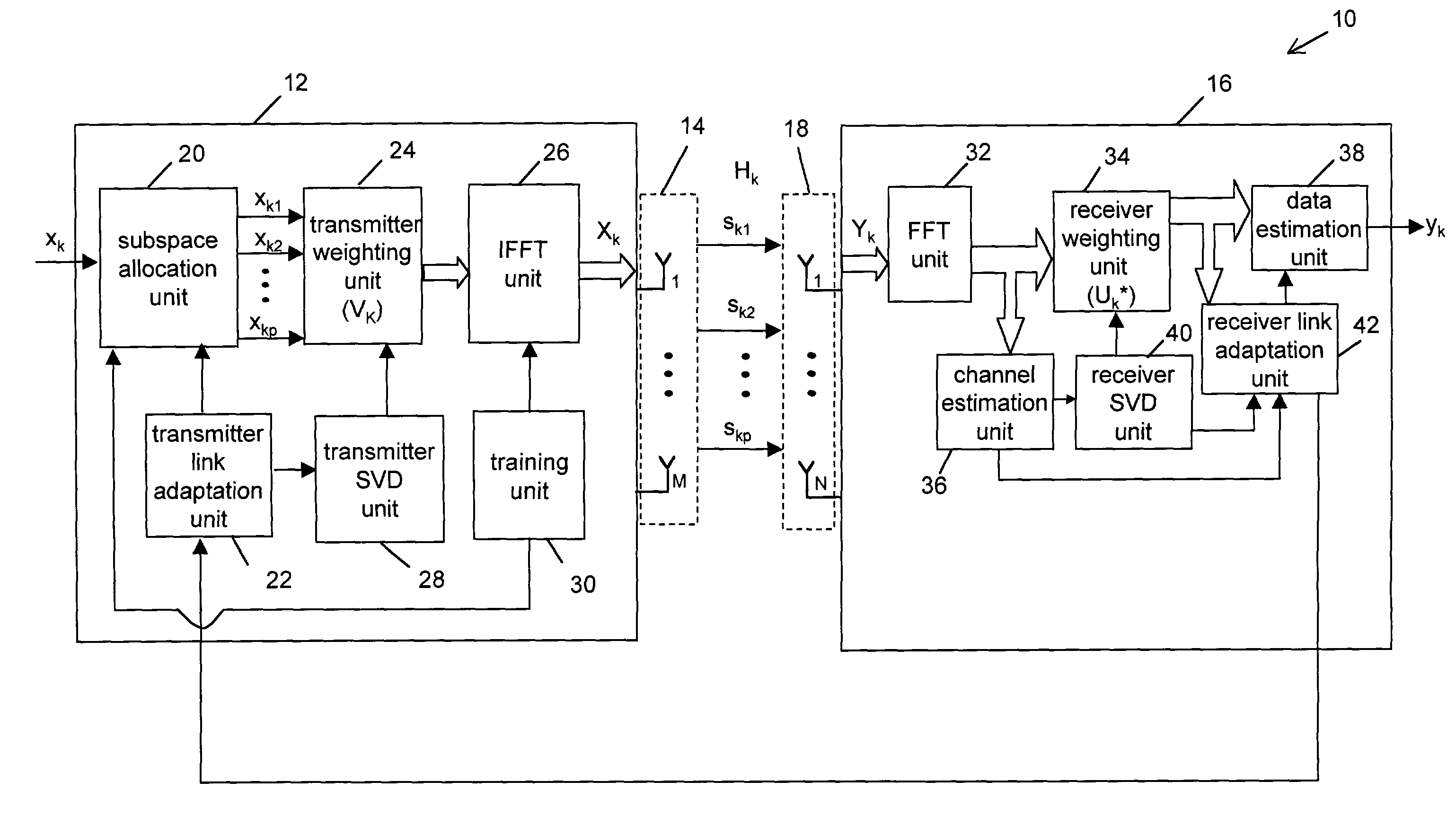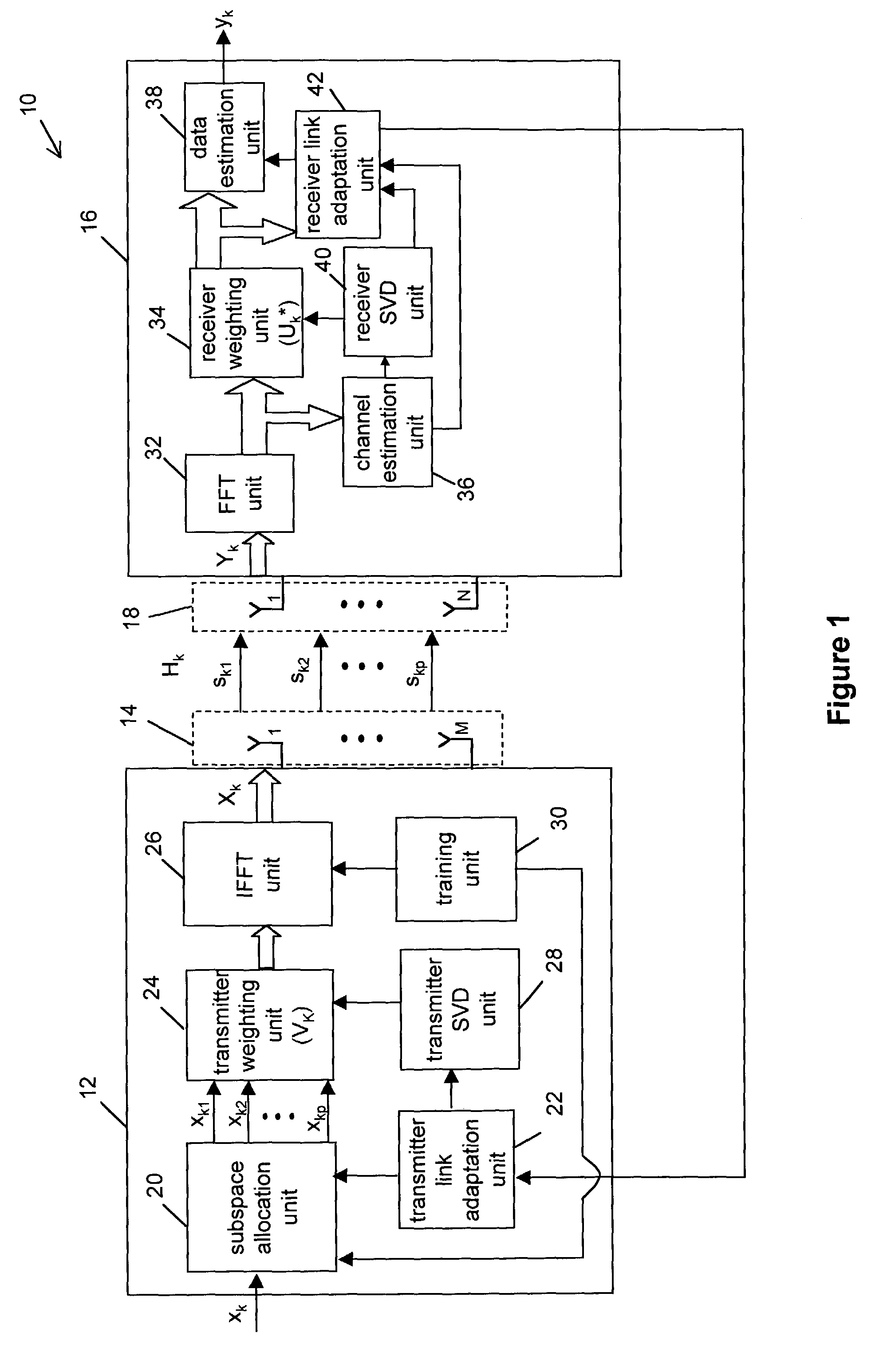System and method for wireless communication systems
a wireless communication system and wireless communication technology, applied in the field of wireless communication system system and method, can solve the problems of excessive hsub>k /sub>to the transmitter, the need for increasing data speed and bandwidth, and the need for data ra
- Summary
- Abstract
- Description
- Claims
- Application Information
AI Technical Summary
Benefits of technology
Problems solved by technology
Method used
Image
Examples
Embodiment Construction
[0036]Referring to FIG. 1, shown therein is a block diagram of an SVD-based OFDM-MIMO communication system 10 in accordance with the present invention. The communication system 10 comprises a transmitter 12 with a transmitter antenna array 14 having M transmitting antenna elements, and a receiver 16 with a receiver antenna array 18 having N receiving antenna elements. The transmitter 12 and the receiver 16 are connected by a multi-path communications channel. The transmitter 12 processes an input data symbol stream, which generally comprises complex data symbols, by allocating a portion of the input data symbol stream xk to different spatial-subspace channels of a given sub-carrier k, and providing a stream of (different) OFDM data symbol waveforms to each antenna element of the transmitter antenna array 14. It should be understood that the term data symbol stream represents a stream of data symbols where each data symbol is related to a group of input data bits (as explained below)...
PUM
 Login to View More
Login to View More Abstract
Description
Claims
Application Information
 Login to View More
Login to View More - R&D
- Intellectual Property
- Life Sciences
- Materials
- Tech Scout
- Unparalleled Data Quality
- Higher Quality Content
- 60% Fewer Hallucinations
Browse by: Latest US Patents, China's latest patents, Technical Efficacy Thesaurus, Application Domain, Technology Topic, Popular Technical Reports.
© 2025 PatSnap. All rights reserved.Legal|Privacy policy|Modern Slavery Act Transparency Statement|Sitemap|About US| Contact US: help@patsnap.com



